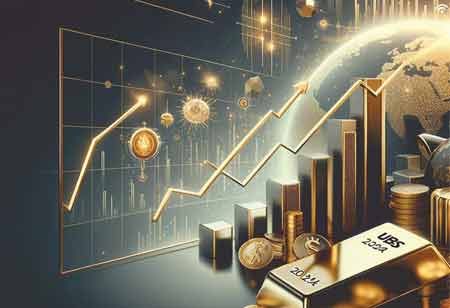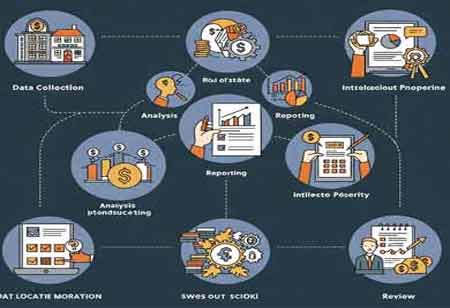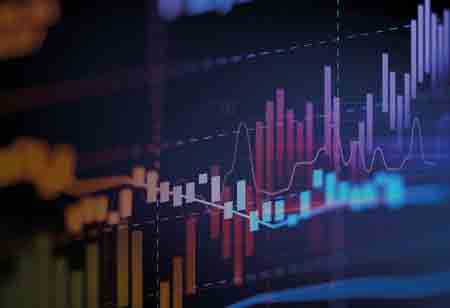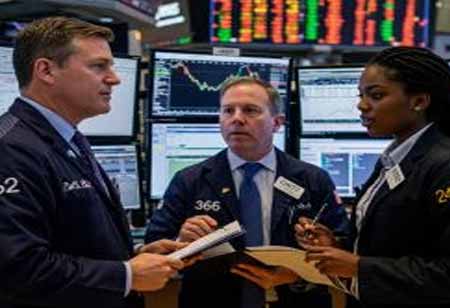CLOSE
Specials
- CPA Firms Canada
- Treasury Management Europe
- Financial Risk Management APAC
- Investment Banking APAC
- Corporate Advisory APAC
- Regtech APAC
- Escrow Services
- Digital Banking Latam
- Trading Solutions APAC
- Financial Asset Management APAC
- RegTech Europe
- Financial Risk Management Europe
- Mortgage Broker
- Financial Licensing Europe
- RIA Advisory Europe
- FinTech Canada
- Investment Banking Canada
- Wealth Management MENA
- Investment Advisory APAC
- Investment Advisory Europe
- Financial Brokerage Firm APAC
- FinTech
- Wealth Management
- Proprietary Trading Europe
- Payment Solution
- Lending mangment
- Financial Health Europe
- Investment Management Latam
- Financial Fraud
- Alternative Investments Canada
- Broker Dealer Firms Canada
- Payment Solution Europe
- Broker Dealer Firms
- Financial Compliance
- Investment Management
- Financial Planning
- FinTech Europe
- Mergers and Acquisitions Consulting
- Debt Collection Agencies
- Claim Adjusting
- Wealth Management APAC
- Valuation Services Canada
- Investment Services
- Mergers and Acquisitions Consulting Canada
- CPA Firms
- Equipment Financing
- Mergers and Acquisitions Consulting APAC
- Claim Adjusting APAC
- Digital Banking Europe
- CFO Services
- Debt Collection Agencies Europe
- Wealth Management Europe
- Mergers and Acquisitions Consulting Europe
- Financial Restructuring Europe
- Financial Portfolio Management Canada
- Business Loan
- Payment and Card Latam
- Wealth Management Latam
- Mergers and Acquisitions Consulting Latam
- Tax Advisory Canada
- Trading Solutions Europe
- Alternative Investments
- Digital Insurance Europe
- Financial Marketing
Weekly Brief
×Be first to read the latest tech news, Industry Leader's Insights, and CIO interviews of medium and large enterprises exclusively from Financial Services Review
Thank you for Subscribing to Financial Services Review Weekly Brief
The Role of Precious Metals in Today's Economy and Tomorrow's Technologies
The precious metals market, a domain of high-value commodities like gold, silver, platinum, and palladium, has always been pivotal in finance and industry. The recent surge in investor interest, along with evolving technological, environmental

By
Financial Services Review | Monday, January 27, 2025
Stay ahead of the industry with exclusive feature stories on the top companies, expert insights and the latest news delivered straight to your inbox. Subscribe today.
The precious metals market, a domain of high-value commodities like gold, silver, platinum, and palladium, has always been pivotal in finance and industry. The recent surge in investor interest, along with evolving technological, environmental, and geopolitical factors, has created shifts in supply, demand, and pricing of these metals. Notably, these changes influence both investment strategies and broader industrial applications, making the precious metals sector an area of active research, policy consideration, and innovation.
Gold remains the most prominent metal in the precious metals sector, often used as a hedge against inflation and economic uncertainty. This year, gold prices have been notably responsive to a confluence of factors, including U.S. monetary policy, global inflationary pressures, and fluctuating currency valuations. In response to persistent inflation concerns, central banks globally have taken varying approaches to interest rates. The U.S. Federal Reserve, for instance, has pursued a policy of incremental rate hikes, which often discourages gold investment by making yield-bearing assets relatively more attractive. However, despite these pressures, demand for gold has persisted, especially as central banks worldwide continue to bolster their reserves. Many nations, particularly in Asia and the Middle East, have accelerated their gold purchases as a buffer against global economic volatility. This trend highlights gold’s longstanding role as a reliable store of value during times of financial uncertainty.
On the technological front, gold has also seen expanded use in the electronics industry, particularly in devices requiring high conductivity and durability. The growing demand for advanced electronics, driven by both consumer needs and the expanding digital economy, has created increased demand for gold in microchips and connectors. This trend is expected to continue as 5G technology proliferates and the Internet of Things (IoT) grows, creating new, lucrative applications for gold in the realm of high-performance technology.
Silver, often considered gold’s “sister metal,” has garnered attention not only for its investment potential but also for its crucial role in green technologies. With increased global emphasis on renewable energy, silver’s application in photovoltaic cells for solar panels has become one of its most prominent industrial uses. The shift toward sustainable energy sources is boosting demand for silver, with some analysts predicting that silver demand from the solar industry will continue to grow steadily over the next decade. Additionally, silver is essential in manufacturing electrical vehicles (EVs), particularly in batteries and electrical components. The electric vehicle sector’s growth trajectory is expected to contribute substantially to silver demand, particularly as regulatory bodies worldwide promote EV adoption to reduce carbon emissions.
Moreover, silver has benefited from increasing medical and antimicrobial applications. Due to its excellent conductivity and resistance to bacteria, silver has been integrated into various medical devices, bandages, and even textiles. This use has expanded post-pandemic, as industries recognize the value of silver’s antimicrobial properties in healthcare and hygiene products. The demand from this sector adds another layer of resilience to silver’s value and highlights the metal’s versatility.
Platinum and palladium, often less discussed than gold or silver, have seen significant shifts in demand and supply dynamics, especially as they are central to the automotive industry. These metals are crucial in catalytic converters, devices that reduce emissions from combustion engines. However, the demand for these metals is at a crossroads. On one hand, the global push towards electric vehicles could eventually reduce demand for platinum and palladium in traditional internal combustion engines, while on the other hand, stringent emissions standards, particularly in Europe and Asia, have led to increased demand for palladium in gasoline engines and platinum in diesel engines.
Platinum, in particular, has seen a resurgence in demand due to its use in hydrogen fuel cell technology, which is gaining attention as a potential zero-emission solution for transportation and industrial applications. Hydrogen fuel cells, which use platinum as a catalyst, are being researched and implemented in applications ranging from heavy transport vehicles to stationary power generation. This technological shift could drive long-term demand for platinum, particularly as countries seek to diversify their clean energy sources.
Supply constraints, however, remain a pressing issue for both platinum and palladium. These metals are predominantly mined in South Africa and Russia, regions that have faced various geopolitical and economic challenges. South Africa, which produces around 70% of the world’s platinum, has grappled with issues like labor strikes, energy shortages, and political instability. Meanwhile, Russia, a major producer of palladium, has faced economic sanctions and export restrictions, which have disrupted global supply chains and driven up prices. The interplay between supply disruptions and rising demand due to environmental regulations is expected to keep prices of these metals volatile.
The precious metals sector is navigating a complex web of economic, technological, and environmental dynamics. Gold’s role as a stable investment continues amid economic uncertainty, while silver’s critical applications in green technology and healthcare suggest strong industrial demand. Platinum and palladium are at a pivotal point, balancing between traditional automotive uses and emerging green technologies like hydrogen fuel cells. As sustainability becomes a central theme in resource extraction, precious metals companies are under pressure to adopt responsible practices, while innovations in recycling and digital assets further shape the industry’s future. Together, these developments indicate that precious metals will continue to be vital, not only as financial assets but also as essential components of a sustainable and technologically advanced future.

Copyright © 2025 Financial Services Review. All rights reserved





